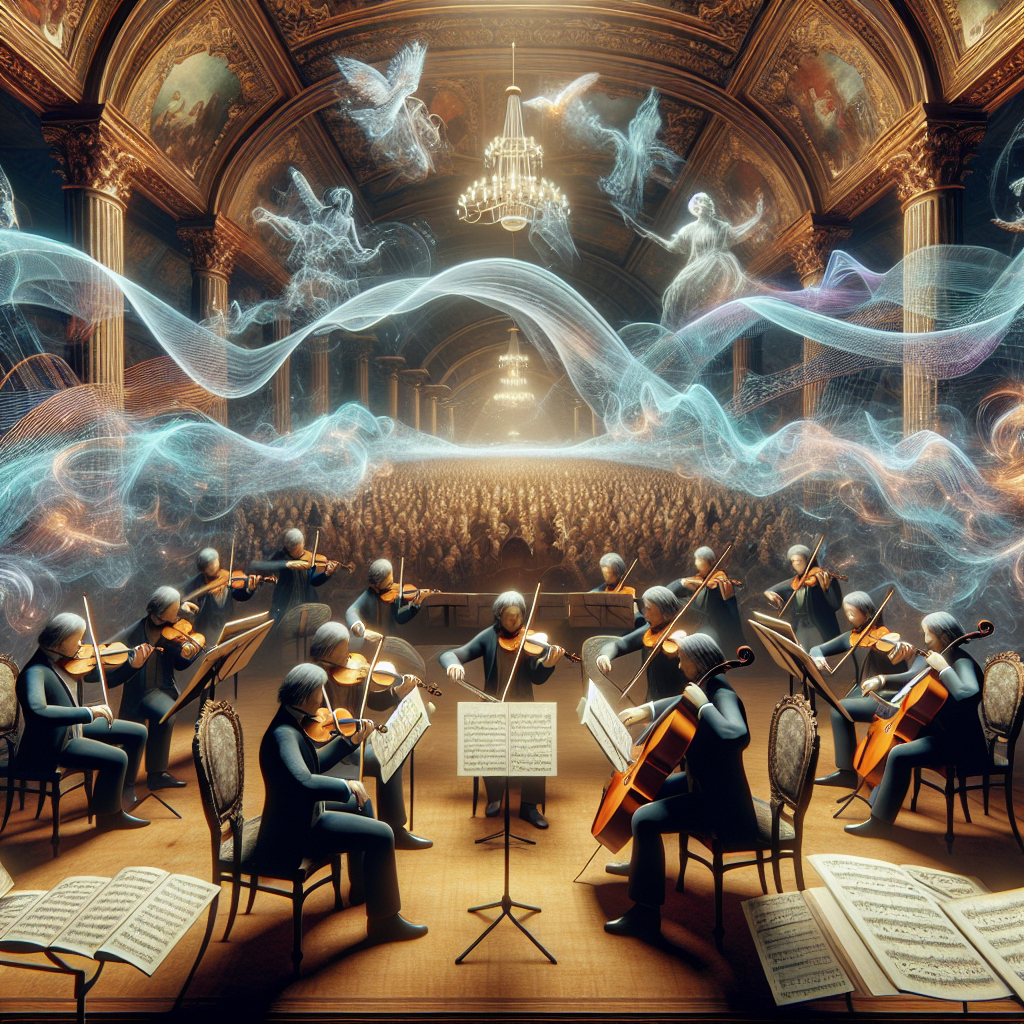
The String Quartets of Beethoven’s Middle Period Explained
Ludwig van Beethoven, one of the most celebrated and influential composers in Western music history, has left an indelible mark on the classical music repertoire. Among his numerous compositions, his string quartets stand out as a significant part of his artistic output. These works, spanning different periods of his life, showcase not just the technical prowess of the composer, but also his evolving musical vision and deepening emotional expression. In particular, the string quartets of Beethoven’s middle period (also known as his “heroic” period) are noteworthy for their innovative structure, complexity, and expressive range. These quartets reflect a time of personal and professional transformation for Beethoven, as he grappled with the onset of deafness and sought to assert his individual artistic voice in the face of personal adversity.
The middle period of Beethoven’s career, roughly dated from 1802 to 1812, marks a significant transition in his compositional style. It is during these years that Beethoven began to develop a more ambitious and bold musical language, one that pushed the boundaries of the classical forms established by earlier composers like Haydn and Mozart. The middle period string quartets, particularly the set known as Opus 59 (the “Razumovsky” quartets), Opus 74 (the “Harp” quartet), and Opus 95 (the “Serioso” quartet), capture the essence of this transition. Each of these works demonstrates Beethoven’s ability to balance rigorous formal structure with profound emotional depth, creating pieces that are both intellectually challenging and deeply moving.
This article explores the string quartets of Beethoven’s middle period, delving into their historical context, compositional techniques, and lasting impact on the chamber music genre. By examining these works, we can gain a deeper appreciation of Beethoven’s genius and the transformative power of his music.
Historical Context: The Heroic Period
The middle period of Beethoven’s career is often referred to as his “heroic” period, a term that aptly describes the grand and optimistic character of many of his works from this time. This phase followed a significant personal crisis for Beethoven. In 1802, he wrote the Heiligenstadt Testament, a letter addressed to his brothers in which he expressed his despair over his increasing deafness and contemplated suicide. However, rather than succumbing to his condition, Beethoven resolved to live for his art, vowing to create music that would transcend his personal suffering and contribute to the greater good of humanity.
This determination to overcome adversity is reflected in the bold and expansive nature of the compositions from this period. Beethoven’s middle period works, including his Third Symphony (“Eroica”), Fifth Symphony, and the piano sonatas known as the “Waldstein” and “Appassionata,” exhibit a new level of emotional intensity and structural innovation. The string quartets composed during this time are no exception; they are characterized by their dramatic contrasts, complex counterpoint, and expansive formal development. Beethoven’s ability to channel his personal struggles into his music resulted in works of profound depth and enduring appeal.
The Razumovsky Quartets (Op. 59)
The three quartets of Opus 59, commissioned by Russian ambassador Count Andreas Razumovsky, are among the most significant of Beethoven’s middle period. Composed in 1805-1806, these quartets represent a departure from the more straightforward forms and styles of his early quartets. They are notable for their length, technical difficulty, and incorporation of Russian themes as a nod to their patron.
The first quartet, Op. 59 No. 1, opens with a grand, expansive Allegro that sets the tone for the work’s ambitious scope. The second movement features a tender and lyrical melody, providing a contrast to the boldness of the opening. The third movement, a Menuetto, is lively and dance-like, leading into the dramatic and virtuosic Finale.
Op. 59 No. 2 is perhaps the darkest and most introspective of the three. The first movement is intense and brooding, while the second movement offers a serene and introspective Andante. The third movement, traditionally a scherzo, is replaced by a theme and variations, leading to a powerful and dynamic Finale.
The third quartet, Op. 59 No. 3, opens with a slow introduction that builds into a lively Allegro. The second movement is lyrical and expressive, while the third movement features a theme and variations. The quartet concludes with a spirited and energetic Presto, showcasing Beethoven’s mastery of form and contrast.

Opus 74: The Harp Quartet
Composed in 1809, the String Quartet in E-flat major, Op. 74, is commonly known as the “Harp” quartet due to the pizzicato arpeggios in the first movement that resemble the sound of a harp. This quartet is a testament to Beethoven’s continued innovation and exploration within the string quartet genre.
The first movement, marked Poco adagio – Allegro, begins with a slow introduction that gives way to a lively and rhythmically complex Allegro. The distinctive pizzicato passages create a unique texture, adding to the movement’s dynamic contrasts. The second movement, Adagio ma non troppo, is a serene and lyrical interlude, offering a moment of repose.
The third movement is a vigorous Scherzo, marked Presto, which showcases Beethoven’s skill in counterpoint and rhythmic complexity. The trio section provides a stark contrast with its lyrical and flowing character. The final movement, marked Allegretto con variazioni, is a theme and variations that demonstrates Beethoven’s inventive prowess and ability to create unity within diversity.
The “Harp” quartet stands out for its blend of lyrical beauty and structural sophistication. Its innovative textures and contrasts reflect Beethoven’s ongoing quest to expand the expressive possibilities of the string quartet.
Opus 95: The Serioso Quartet
The String Quartet in F minor, Op. 95, composed in 1810, is known as the “Serioso” quartet, a title that hints at its intense and serious character. This quartet is shorter and more compact than the previous middle period quartets, but it is no less profound in its emotional impact.
The first movement, marked Allegro con brio, is characterized by its intensity and dramatic contrasts. The music is taut and driven, with a sense of urgency that pervades the entire movement. The second movement, Allegretto ma non troppo, is more subdued but no less expressive, with a lyrical and flowing character.
The third movement, marked Allegro assai vivace ma serioso, is a powerful Scherzo that features jagged rhythms and bold dynamic contrasts. The trio section provides a moment of contrast with its smoother and more lyrical lines. The final movement, marked Largo – Allegretto agitato, is a dramatic and turbulent conclusion to the quartet, showcasing Beethoven’s ability to create tension and release within a tightly structured framework.
The “Serioso” quartet is a powerful example of Beethoven’s ability to convey deep emotion and complexity within the string quartet form. Its conciseness and intensity make it a standout work within the middle period quartet repertoire.
Beethoven’s Influence on the String Quartet Genre
Beethoven’s middle period string quartets had a profound impact on the development of the string quartet genre. His innovations in form, structure, and expressive range set a new standard for composers who followed in his footsteps. The quartet as a medium for serious and profound musical expression was significantly elevated by Beethoven’s contributions, influencing composers such as Felix Mendelssohn, Johannes Brahms, and Dmitri Shostakovich.
One of Beethoven’s major contributions was the expansion of the quartet’s formal and expressive possibilities. He pushed the boundaries of the traditional four-movement structure, incorporating complex counterpoint, dramatic contrasts, and innovative textures. His use of thematic development and variation techniques set new standards for compositional rigor and creativity.
Furthermore, Beethoven’s quartets demonstrated that chamber music could be as emotionally and intellectually engaging as symphonic music. His ability to convey deep personal expression through the intimate medium of the string quartet paved the way for later composers to explore the genre as a vehicle for their own artistic voices.
The legacy of Beethoven’s middle period quartets is evident in the works of later composers who sought to build upon and expand his innovations. The quartet repertoire of the 19th and 20th centuries owes a great debt to Beethoven’s pioneering work, making him a towering figure in the history of chamber music.
Conclusion
The string quartets of Beethoven’s middle period represent a critical juncture in his development as a composer and mark a transformative period in the history of chamber music. These works embody the transition from the Classical to the Romantic era, showcasing Beethoven’s innovative use of form, texture, and emotional depth.
Through the Opus 59 “Razumovsky” quartets, the Opus 74 “Harp” quartet, and the Opus 95 “Serioso” quartet, Beethoven expanded the horizons of the string quartet genre, setting new standards for technical and expressive possibilities. His ability to integrate rigorous formal structures with profound emotional expression has left a lasting legacy that continues to inspire and challenge musicians and audiences alike.
As we listen to these quartets today, we are reminded of Beethoven’s resilience and his unwavering commitment to his art. Despite the personal challenges he faced, including his increasing deafness, Beethoven’s middle period quartets reflect an indomitable spirit and a relentless pursuit of artistic excellence.
In conclusion, the string quartets of Beethoven’s middle period are not only masterpieces of chamber music, but also testaments to the transformative power of human creativity and determination. They stand as enduring symbols of Beethoven’s genius and his enduring contribution to the world of music.